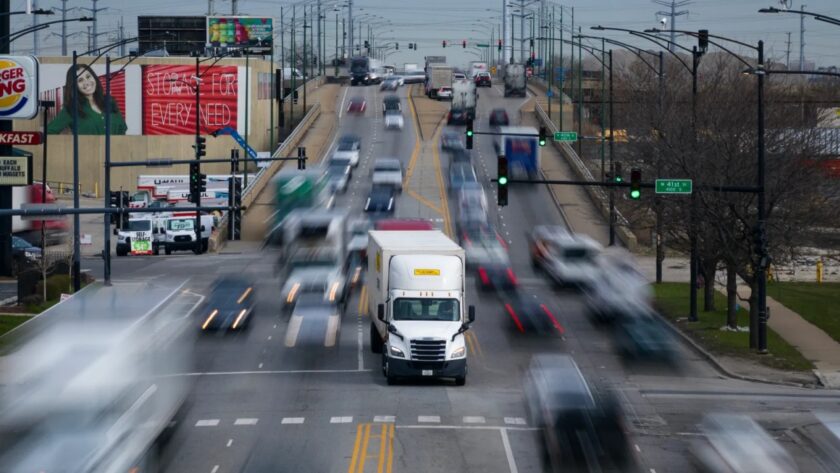Chicago’s streets are arteries of constant motion, pulsating with the energy of millions. But this vibrant activity comes with inherent dangers. Each year, the city records over 100,000 traffic crashes, resulting in tens of thousands of injuries and, tragically, well over a hundred deaths. While any collision holds the potential for harm, the level of risk isn’t uniform across all road users. Does the type of vehicle you operate, or whether you’re even in a vehicle at all, dramatically alter your chances of suffering severe consequences in a crash?
The answer, unfortunately, is yes. Understanding who faces the greatest danger is crucial for fostering a safer road environment for everyone. Let’s break down the risks on Chicago’s roads by examining the experiences of different road user types.
The Baseline: Occupants of Passenger Cars
For many, the standard passenger car – sedans, hatchbacks, coupes – is the default mode of transport and serves as a useful reference point for risk. Modern cars are equipped with an array of safety features: seatbelts, multiple airbags, anti-lock brakes, stability control, and crumple zones designed to absorb impact energy. These innovations offer occupants substantial protection in many common crash scenarios. However, this protection has limits. While relatively safe compared to more vulnerable users, car occupants face significantly increased risk when colliding with much larger vehicles.
Larger Vehicles: SUVs and Light Trucks
Sport Utility Vehicles (SUVs) and light pickup trucks have surged in popularity. Their occupants often benefit from increased safety in collisions due to the vehicle’s greater size, weight, and higher ride height. However, these same characteristics create a significant external threat. Research increasingly shows that SUVs and larger trucks pose a heightened risk of severe injury or death to occupants of smaller cars, motorcyclists, bicyclists, and especially pedestrians. Their higher front ends and often blunt profiles are more likely to cause severe torso and head injuries to pedestrians upon impact. Tellingly, recent data indicates nearly half of all pedestrians killed in Chicago are struck by an SUV or larger vehicle. While safer for those inside, these vehicles significantly increase the danger for everyone else sharing the road.
High Risk, Low Protection: Motorcyclists
Motorcyclists represent one of the most high-risk groups on any road network. Despite making up only about 3% of registered vehicles in Illinois, they consistently account for a staggering 14-15% of all traffic fatalities in the state and city. Nationally, the risk differential is stark: motorcyclists are estimated to be around 28 times more likely to die per mile traveled than occupants of passenger cars. The reason is brutally simple: near-total lack of physical protection. Riders are exposed to direct impact forces, road hazards, and the elements. Their smaller profile also makes them less visible to other drivers, contributing to accidents where drivers report they “didn’t see” the motorcycle.
These severe outcomes highlight the critical importance of having a motorcycle accident attorney Chicago riders can turn to for legal guidance and advocacy when tragedy strikes. Legal professionals experienced with motorcycle crash claims can help injured riders recover fair compensation and navigate insurance complexities.
The Most Vulnerable: Pedestrians
With absolutely no external protection, pedestrians are arguably the most vulnerable users of Chicago’s road system. When a collision occurs between a vehicle and a pedestrian, the consequences for the pedestrian are almost always severe. Data from Chicago shows that nearly 88% of pedestrians struck by vehicles suffer injury or death. Worryingly, pedestrian fatalities have been on the rise both nationally and locally in recent years, with a reported 9.5% increase across Illinois in 2024. Factors contributing to these tragic incidents include driver distraction and speeding, inadequate lighting (most pedestrian fatalities occur in dark conditions), and the increasing prevalence of larger vehicles like SUVs. While crashes can happen anywhere, urban roads, often away from marked intersections, see a high number of these incidents.
Navigating on Two Wheels: Bicyclists
Similar to pedestrians, bicyclists lack structural protection and face high risks when interacting with motor vehicles. In 2022, Chicago saw over 1,700 reported bicycle accidents, and over 73% of those resulted in injury or death. Although bicycle crashes represent less than 1% of total crashes in Illinois, they account for roughly 3% of the state’s fatal crashes. Specific hazards for cyclists include “dooring” incidents (colliding with a suddenly opened car door), poor visibility to drivers (especially at night or in bad weather), navigating intersections with turning vehicles, and the lack of safe, protected cycling infrastructure on many routes. The summer months, when cycling activity peaks, predictably see the highest number of bicycle accidents.
Heavyweights on the Road: Commercial Trucks (Semis, Buses)
Large commercial trucks are essential for commerce but represent a unique hazard due to their sheer mass and size. While truck drivers themselves are relatively protected within their large cabs, collisions involving these vehicles pose an extreme risk to others. In Illinois during 2022, large trucks were involved in crashes resulting in 155 fatalities and over 2,000 injuries, overwhelmingly suffered by occupants of other vehicles or vulnerable road users.
These dangers underscore why those involved in such accidents often seek the help of a truck accident attorney Chicago victims can rely on. Truck accident cases often involve complex liability issues, regulatory factors, and insurance negotiations that require specialized legal expertise.
Factors contributing to truck accident severity include their long stopping distances, large blind spots (or “no-zones”) around the vehicle, wide turning radiuses that can sweep into adjacent lanes, and the potential for driver fatigue due to long hours.
Synthesizing the Risk: The Hierarchy on Chicago’s Roads
When analyzing the risk of severe injury or death per incident, a clear hierarchy emerges on Chicago’s roads:
- Highest Risk:Pedestrians, Bicyclists, and Motorcyclists. These Vulnerable Road Users (VRUs) consistently suffer the most devastating outcomes due to their lack of protection.
- Moderate Risk:Occupants of smaller passenger cars. Their risk level is highly dependent on the circumstances of the crash, particularly the size of the other vehicle involved.
- Lowest Risk (to self):Occupants of SUVs, Light Trucks, and Large Commercial Trucks. However, these vehicle types pose the greatest danger to others in collisions.
It’s critical to remember that driver behavior significantly impacts risk across all categories. Speeding (a factor in 68% of Chicago traffic deaths) and reckless driving (a factor in 84%) exponentially increase the danger, with the consequences falling hardest on the most vulnerable.
The data paints a clear picture: risk on Chicago’s roads is not evenly distributed. Pedestrians, bicyclists, and motorcyclists face a vastly higher chance of severe injury or death in any given incident. In crashes between vehicles, size dictates danger, with larger vehicles posing a greater threat to smaller ones. Recognizing this disparity is the first step toward fostering a safer environment. Road safety demands shared responsibility – drivers of larger vehicles must operate with heightened awareness of the danger they pose, all drivers need to actively look for vulnerable users, and those walking, cycling, or riding must prioritize visibility and predictability. Ultimately, creating safer streets requires a collective commitment to attentive driving, protective infrastructure, and policies that prioritize the well-being of the most vulnerable among us.





